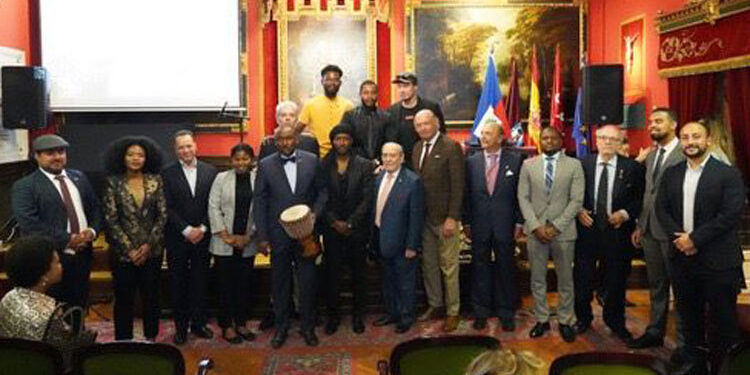The Diplomat
Last Thursday, the Embassy of Haiti celebrated International Music Day at the Real Sociedad Económica de Madrid, with the show Latidos de Haití.
The event was a big party where the public could discover the kompa, performed by the Haitian group Eritaj.
“The feast of music will no doubt leave you sweaty and ecstatic in the presence of unleashed artists, said the Haitian ambassador, Guy G. Lamothe. Tonight you are at the House of Haitian Music for the day of the Fête de la Musique… Haiti, cultural cradle of an entire Caribbean region, with its kompa and its dance music…”.
Looking back in history, the Haitian ambassador recalled that it was the French Minister of Culture, Jaclc Lang, a member of the Socialist Party, who has always wanted artists to perform free of charge on 20 June in front of a large audience at the beginning of the arrival of summer. “Professional musicians and entertainers got involved and the Fête de la Musique was exported to Haiti. A country of artistic and danceable music, the most popular being kompa”.
“The kompa is a form of music and dance that represents an important part of Haiti’s cultural heritage, noted Guy G. Lamothe. During the period 1958-1960, a great Haitian musician, Nemours Jean Baptiste, popularised it and the kompa diversified with all its variants throughout the regions of Haiti and even in the diaspora. Thus, each dance music group has its own kompa. This music is therefore a symbol of social cohesion and an intrinsic element of Haiti’s cultural life, and some of its varieties include the live performances of Hounsi, Melasses, Cadence Rampas or Makyavel”.
In the case of Haiti, the initiative dates back to 2018, when the Haitian Ministry of Culture started working for the inclusion of kompa in the National Register of Intangible Cultural Heritage of Haiti. This became a reality a year later, in 2019, and then in 2024, when UNESCO received the kompa’s nomination.
This musical style was popularised since the mid-1950s, and is considered by experts to be an evolution of méringue, a rhythm danced and sung in Haiti since the late 19th century, which in turn derived from carabiné. This is a folkloric rhythm from Hispaniola, with a strong African influence, and is performed with drums, tambourine and accordion. The Puerto Rican bomba, Cuban son and calypso are elements that stand out in the kompa’s sonority.








